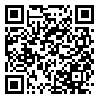دوره 1، شماره 3 - ( 6-1396 )
جلد 1 شماره 3 صفحات 141-131 |
برگشت به فهرست نسخه ها
Download citation:
BibTeX | RIS | EndNote | Medlars | ProCite | Reference Manager | RefWorks
Send citation to:



BibTeX | RIS | EndNote | Medlars | ProCite | Reference Manager | RefWorks
Send citation to:
Eftekhari A, Mirzaei S, Azimpour S, Taher A. Evaluation of the Effect of Interventions on the Improvement of the Risk Management Process in Intensive Care Unit of Ziaee Hospital – Ardakan: Failure Mode Effects Analysis. EBHPME 2017; 1 (3) :131-141
URL: http://jebhpme.ssu.ac.ir/article-1-85-fa.html
URL: http://jebhpme.ssu.ac.ir/article-1-85-fa.html
Evaluation of the Effect of Interventions on the Improvement of the Risk Management Process in Intensive Care Unit of Ziaee Hospital – Ardakan: Failure Mode Effects Analysis. 1. 1396; 1 (3) :131-141
چکیده: (3492 مشاهده)
Background: Failure Mode Effects Analysis (FMEA) is an analytical method for risk assessment that seeks to identify and rank as far as possible the potential risks within the scope of risk assessment, as well as the causes and effects associated with it. Considering the classification of the Intensive Care Unit (ICU) as one of the high-risk wards, this ward of Ziaee Hospital- Ardakan is studied to identify, prioritize and evaluate errors, and present and implement proposed measures to reduce or eliminate possible errors.
Methods: This is a quasi-experimental study of interventional type. The present study is a quantitative, qualitative combination of inductive and applied method and evaluates and analyzes the states and effects of the error using FMEA method in the form of a before-after study. Studies of this research were carried out during the period of January 26 to December, 2016 on the processes of the intensive care unit of Ziaee Hospital in Ardakan. The information collection is based on FMEA standard worksheet and formation of FMEA team.
Results: Re-evaluate the risk priority number (RPN) after performing corrective measures showed that the priority score of all common errors was decreased in the ward. The results of this study indicated that out of 26 identified clinical errors, 10 first error modes were selected for further study. Selected error modes accounted for the highest error rate. This was related to the non-usage of routine disinfectants in hand washing with a score of 504, and the lowest score was related to the failure of the nurse to identify alarm type with a score of 240.
Conclusion: We can reduce as much as possible the severity of injuries by re-measuring the priority score and making effective control and corrective measures by identifying the errors and methods of reducing these errors in the intended ward or in any other ward in the organization.
Methods: This is a quasi-experimental study of interventional type. The present study is a quantitative, qualitative combination of inductive and applied method and evaluates and analyzes the states and effects of the error using FMEA method in the form of a before-after study. Studies of this research were carried out during the period of January 26 to December, 2016 on the processes of the intensive care unit of Ziaee Hospital in Ardakan. The information collection is based on FMEA standard worksheet and formation of FMEA team.
Results: Re-evaluate the risk priority number (RPN) after performing corrective measures showed that the priority score of all common errors was decreased in the ward. The results of this study indicated that out of 26 identified clinical errors, 10 first error modes were selected for further study. Selected error modes accounted for the highest error rate. This was related to the non-usage of routine disinfectants in hand washing with a score of 504, and the lowest score was related to the failure of the nurse to identify alarm type with a score of 240.
Conclusion: We can reduce as much as possible the severity of injuries by re-measuring the priority score and making effective control and corrective measures by identifying the errors and methods of reducing these errors in the intended ward or in any other ward in the organization.
نوع مطالعه: پژوهشي |
دریافت: 1396/3/29 | پذیرش: 1396/6/29 | انتشار: 1396/12/26
دریافت: 1396/3/29 | پذیرش: 1396/6/29 | انتشار: 1396/12/26
| بازنشر اطلاعات | |
 |
این مقاله تحت شرایط Creative Commons Attribution-NonCommercial 4.0 International License قابل بازنشر است. |



